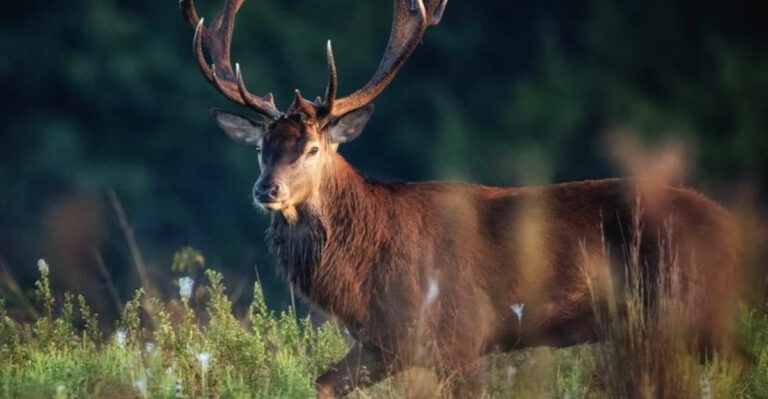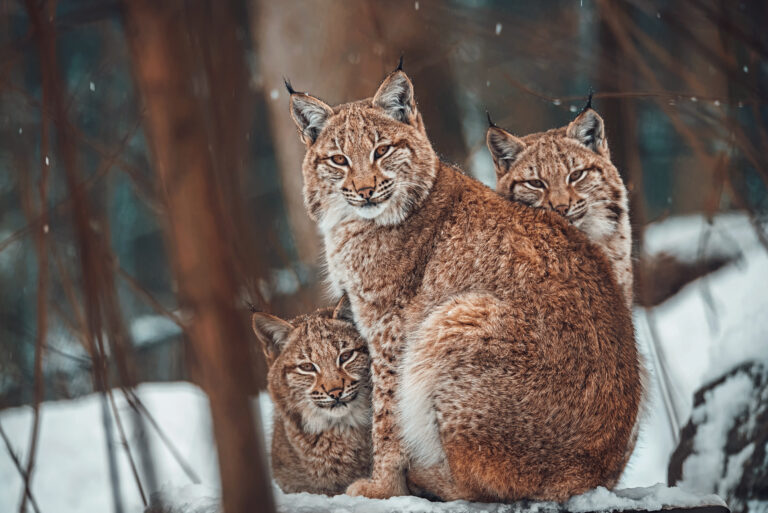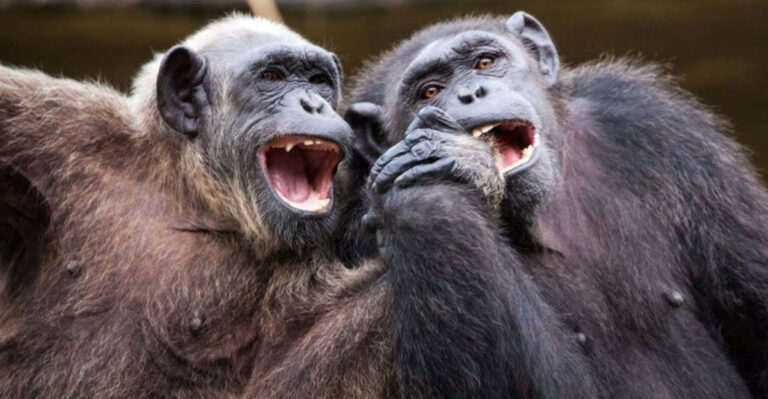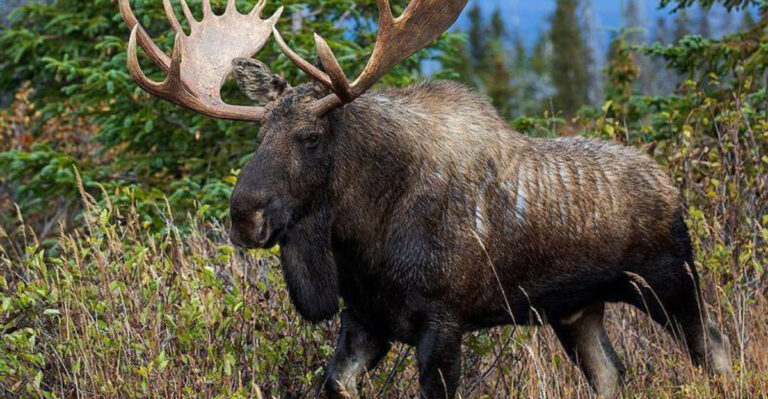17 Rare Animals So Unique You Won’t Believe They’re Real
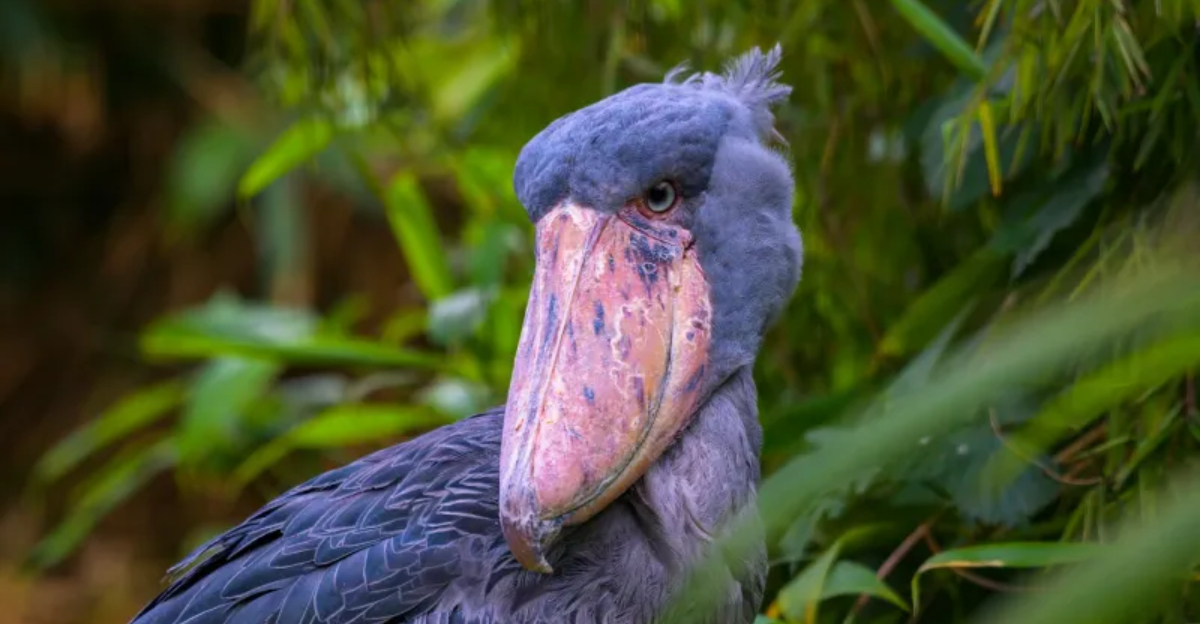
Some animals don’t just blend into the wild—they steal the spotlight. With wild colors, quirky traits, and rare appearances, these creatures are nature’s ultimate showstoppers.
Get ready to meet animals so unique, you’ll be doing double takes!
1. Komodo Dragon
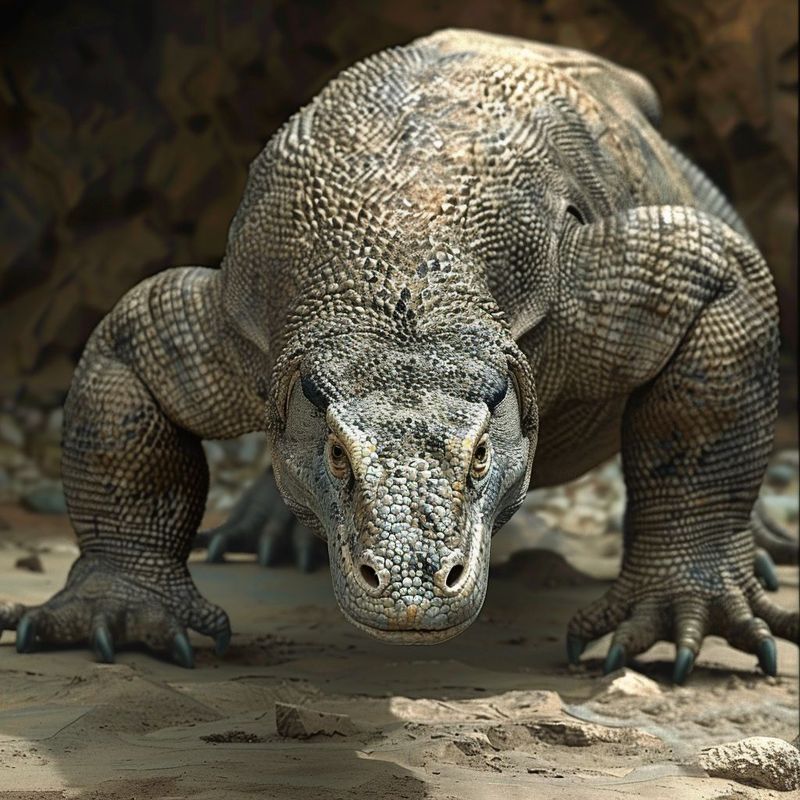
The Komodo Dragon is the world’s largest lizard, reaching lengths of up to 10 feet and tipping the scales at over 150 pounds.
Native to a handful of Indonesian islands, it uses stealth and strength to ambush prey, aided by venom and sharp teeth.
Despite their fearsome reputation, Komodo Dragons are a conservation success story and a major ecotourism attraction.
However, habitat loss and human activity still threaten their survival in the wild.
Protecting these prehistoric predators ensures one of Earth’s most legendary reptiles continues to thrive.
2. The Blue Dragon
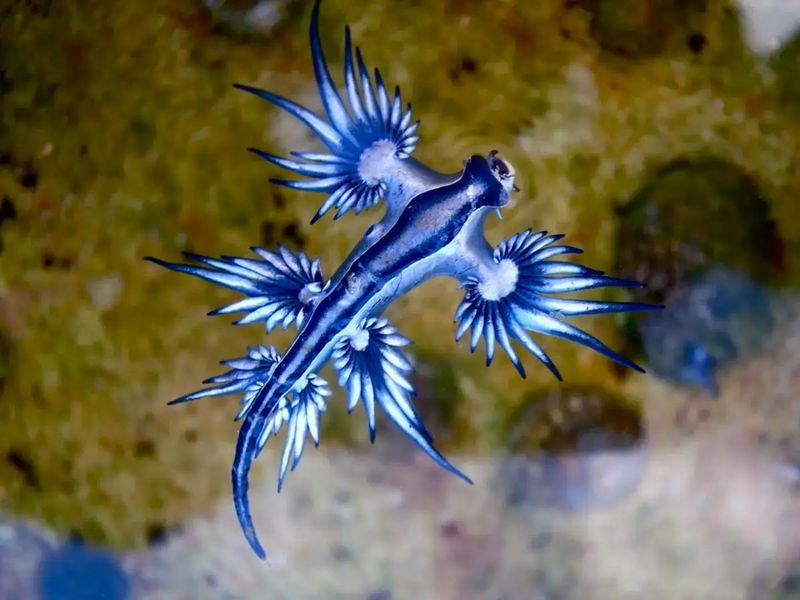
The Blue Dragon, a small sea slug, mesmerizes with its vibrant blue and silver coloration. Found floating on the ocean’s surface, it absorbs energy from sunlight, creating a striking visual display.
These creatures feed on venomous prey, storing the toxins for their own defense. Their unique appearance and behavior have captivated marine biologists and ocean enthusiasts alike.
Despite their delicate beauty, they can deliver a painful sting if handled. Observing them from a distance in their natural habitat is the best way to appreciate their elegance without risk.
3. Glass Frog
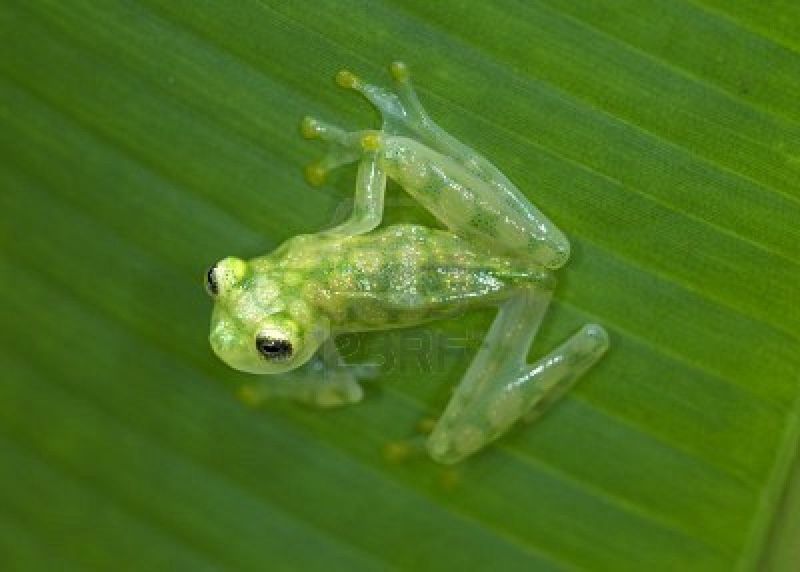
The Glass Frog is a rainforest-dwelling amphibian with see-through skin that reveals its internal organs, including its tiny, beating heart.
This stunning transparency helps it blend in with leaves, mimicking raindrops or dew to avoid predators.
Active at night, it feeds on insects and shows rare parental care—males guard eggs laid on leaves above streams.
Its delicate appearance hides a tough survivor, but deforestation is putting this species at serious risk.
Protecting rainforest habitats is essential to ensure these translucent marvels continue to thrive in the wild.
4. Aye-Aye
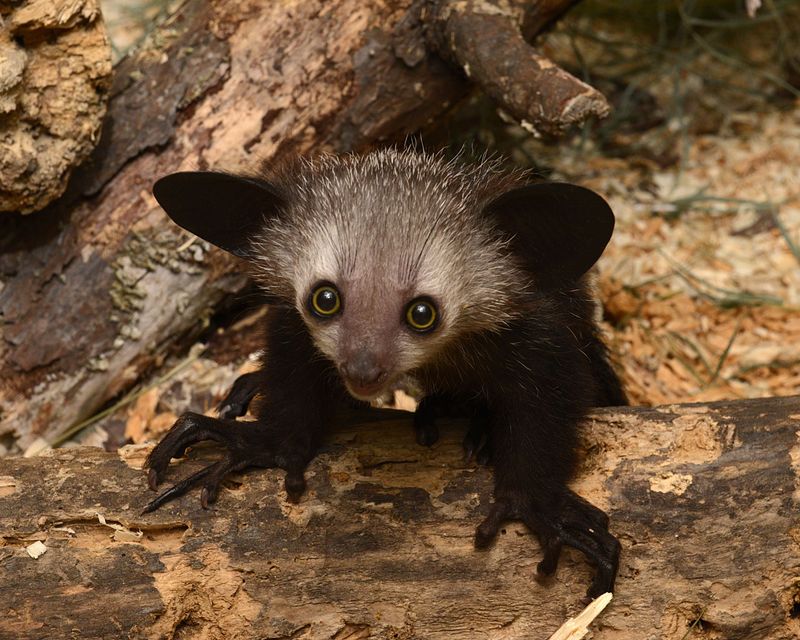
The Aye-Aye is a nocturnal primate from Madagascar, famous for its big eyes and creepy-cool extra-long middle finger.
At night, it taps on trees like a little woodpecker, listening for insect larvae hiding inside the bark.
Once it hears movement, it uses that spindly finger to scoop out its snack with surgical precision.
This echolocation-style hunting is rare for primates and makes the Aye-Aye one of the weirdest—and most fascinating—creatures around.
Often misunderstood, this insect-eating oddball actually helps keep forests healthy and deserves protection, not fear.
5. The Sunda Pangolin
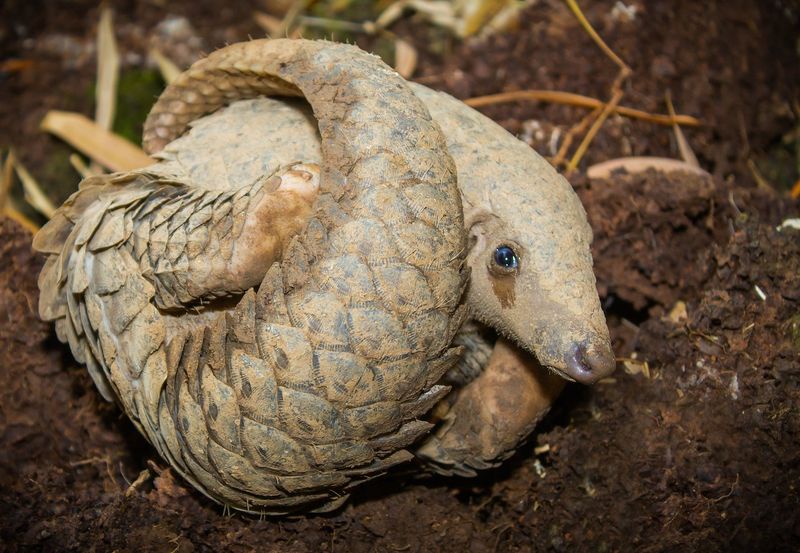
The Sunda Pangolin, known for its scaly armor, is a unique creature found in the tropical forests of Southeast Asia.
These nocturnal animals use their powerful claws to climb trees and forage for ants and termites. Despite their tough exterior, they are gentle and shy.
Their scales are made of keratin, the same material as human fingernails, providing them with protection against predators.
Unfortunately, they are critically endangered due to illegal poaching for their scales and meat. Conservation efforts are crucial to protect these fascinating creatures and ensure their survival in the wild.
6. Quokka
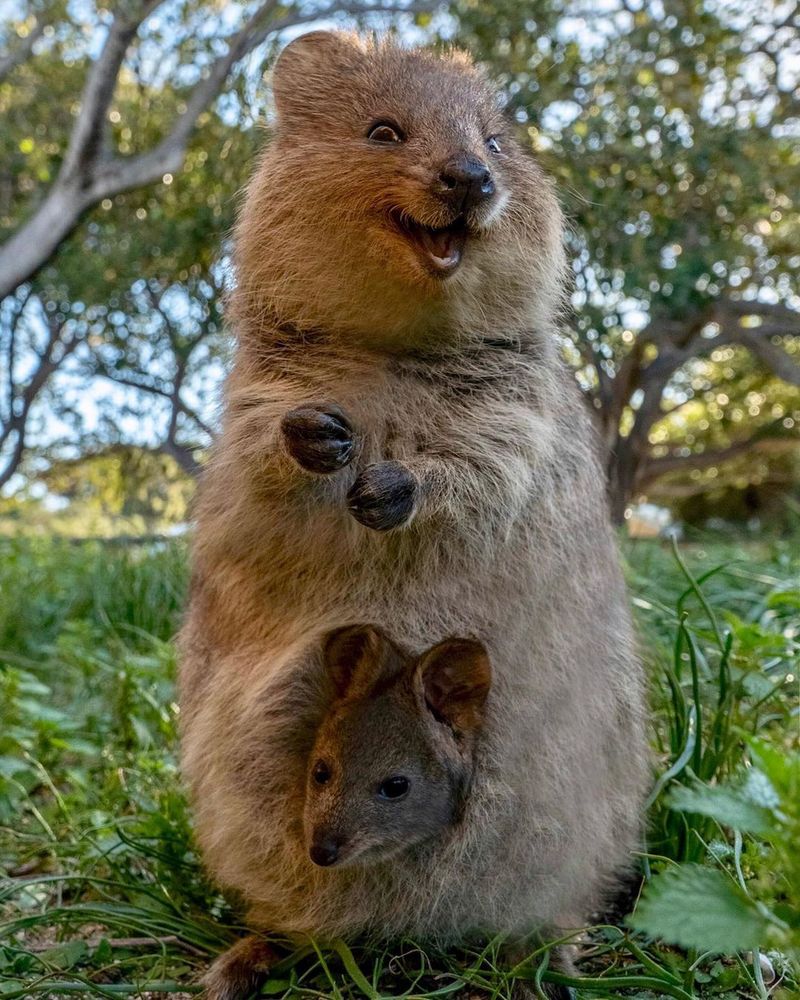
The Quokka, often dubbed the “world’s happiest animal,” is famous for its constant, cheerful-looking grin.
Found mostly on Rottnest Island off Australia’s coast, these small marsupials charm visitors with their friendly and curious nature.
They munch on grasses and leaves, happily hopping around and posing for the occasional selfie (though touching or feeding them is a no-go).
Despite their popularity, Quokkas are vulnerable to habitat loss and predators, making conservation efforts essential.
7. Axolotl
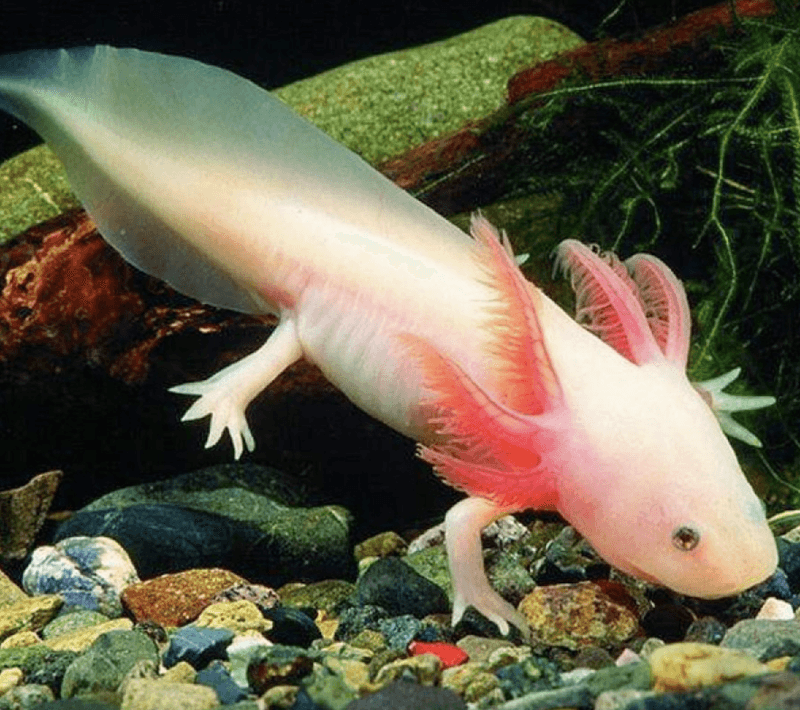
The Axolotl, often called the “Mexican walking fish,” is actually an amphibian that never grows up—literally.
Thanks to a trait called neoteny, it keeps its frilly gills and aquatic lifestyle throughout its life.
Its real superpower? Regenerating limbs, spinal cords, and even parts of its heart and brain with ease.
This tiny wonder has become a scientific superstar, offering clues to unlocking human regenerative medicine.
Sadly, it’s critically endangered in the wild, making conservation efforts more vital than ever.
8. Okapi
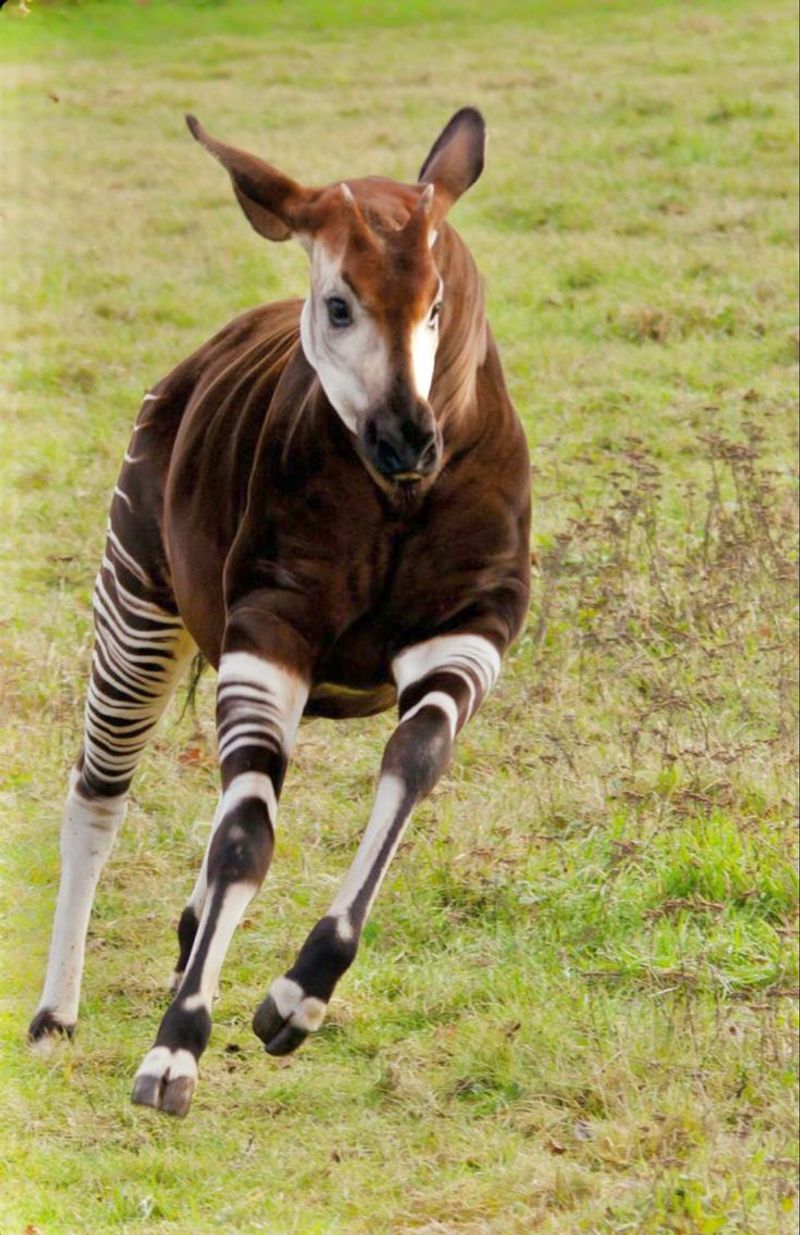
The Okapi looks like a zebra-giraffe mashup, but it’s actually the giraffe’s secretive forest cousin.
Found in the rainforests of the Democratic Republic of Congo, this elusive creature is rarely seen in the wild.
Its striped legs act as camouflage, breaking up its outline in the dappled jungle light to help it hide from predators.
Using its long, prehensile tongue, the Okapi browses on leaves, buds, and fruit high off the ground.
Solitary and quiet, it remains one of the rainforest’s most mysterious and captivating animals.
9. Narwhal
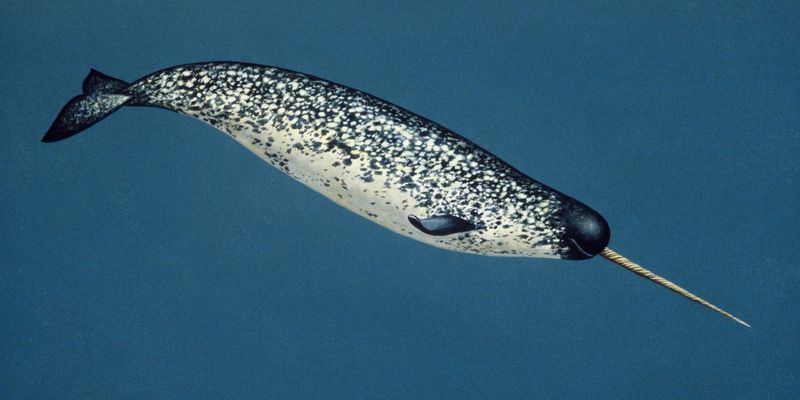
The Narwhal, nicknamed the “unicorn of the sea,” roams the Arctic with a spiraled tusk that looks straight out of a fantasy novel.
That tusk is actually a giant tooth, possibly used for mating displays or sensing changes in the water.
With their social nature, Narwhals travel in pods and play a key role in the Arctic marine ecosystem.
Climate change and human activity are putting pressure on their icy habitat, threatening their survival.
Protecting these mysterious tusked whales helps preserve the fragile beauty of the Arctic ocean world.
10. Fossa
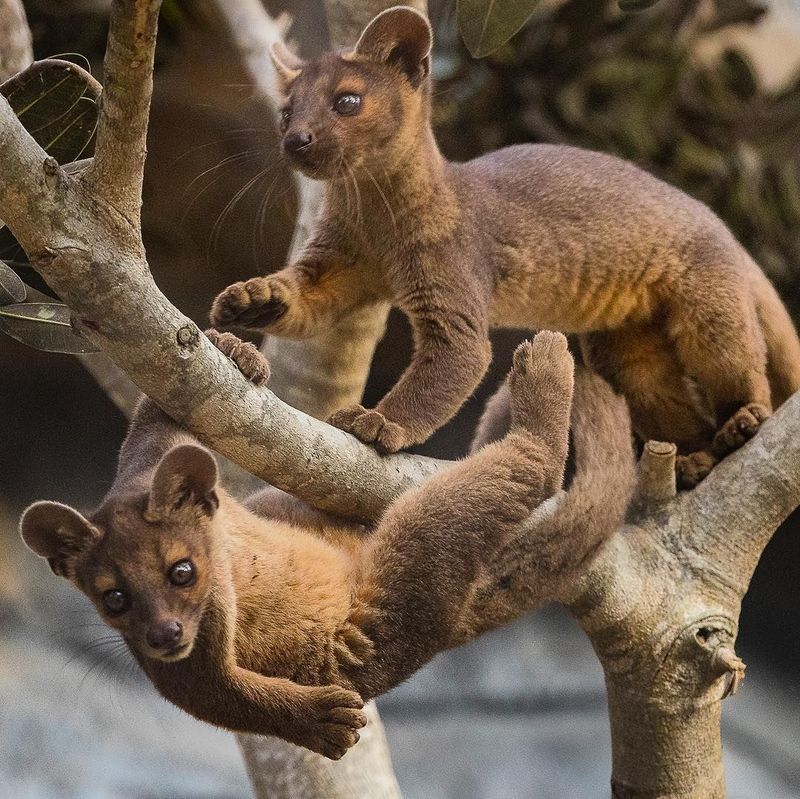
The Fossa, Madagascar’s top predator, looks like a mash-up of a cat, dog, and mongoose—and it hunts like a pro.
With sharp claws and a long tail for balance, it races through the treetops chasing lemurs, its favorite snack.
Despite its power, the Fossa is under threat as deforestation shrinks its forest home.
This elusive carnivore plays a key role in keeping Madagascar’s delicate ecosystem in check.
Protecting the Fossa means preserving one of the most unique—and endangered—wildlife hotspots on Earth.
11. Shoebill Stork
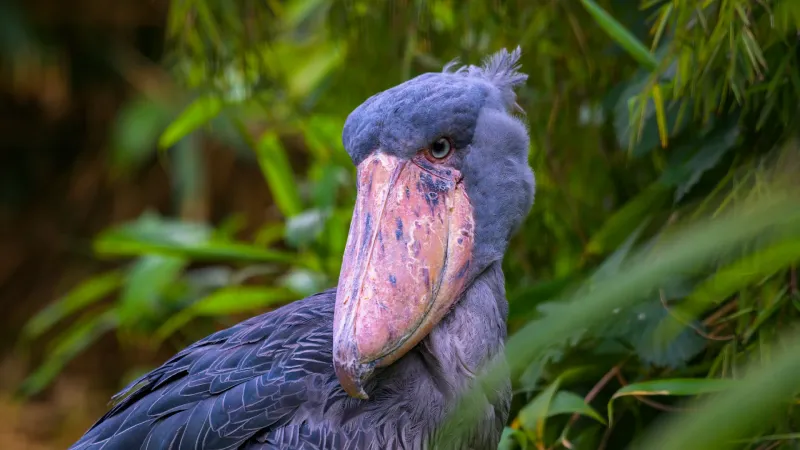
The Shoebill Stork is a striking bird with a giant, shoe-shaped bill and an ancient, almost dinosaur-like look.
Found in East Africa’s swamps, it’s a master of stillness—standing frozen for hours before striking prey with sudden precision.
Its diet includes fish, frogs, and even baby crocodiles, making it one of the wetlands’ top predators.
Though intimidating, Shoebills are vulnerable, threatened by habitat loss and human disturbance.
Protecting their watery homes is key to keeping these one-of-a-kind birds around for future generations.
12. Pink Fairy Armadillo
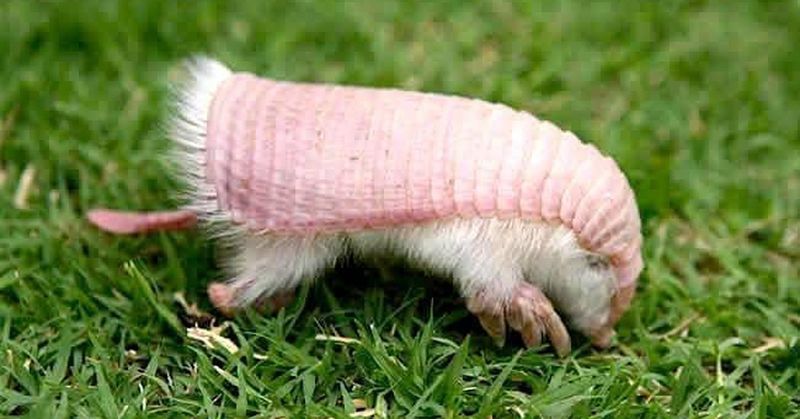
The Pink Fairy Armadillo is the tiniest and most whimsical member of the armadillo family, found in Argentina’s sandy plains.
With a soft pink shell and fluffy white fur, it looks more like a storybook character than a real animal.
It spends most of its life underground, using its powerful claws to burrow quickly and escape predators.
This elusive creature is vulnerable to habitat loss and climate change, as it relies on very specific conditions to survive.
Protecting its fragile habitat is key to ensuring this enchanting armadillo doesn’t disappear from the real world.
13. Sunda Colugo
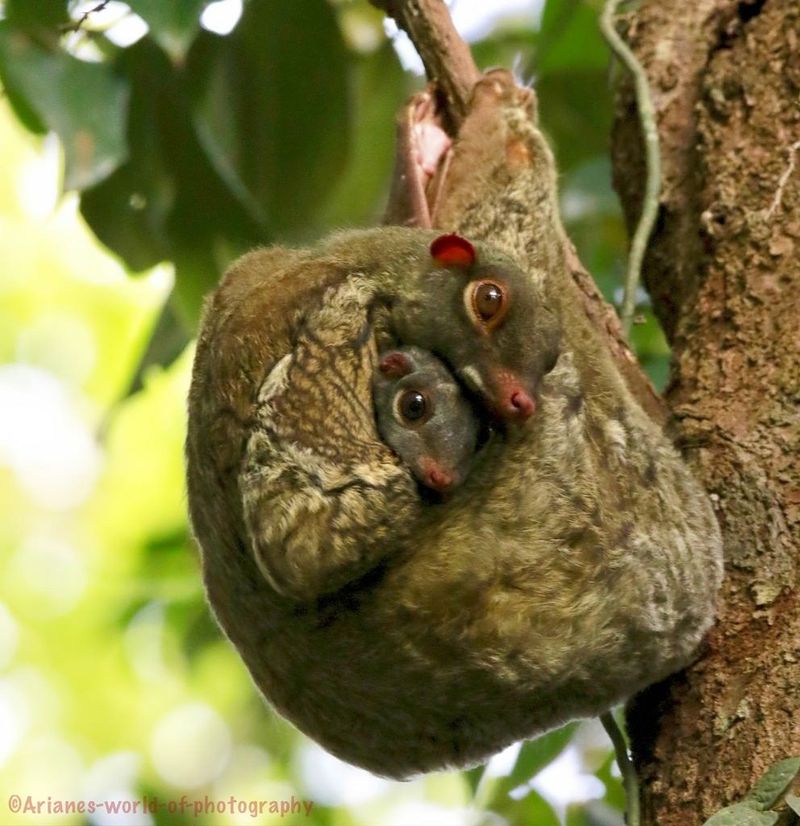
The Sunda Colugo, also called the Malayan Flying Lemur, isn’t actually a lemur and doesn’t fly—but it *does* glide like a pro.
With a stretchy membrane from neck to tail, it can soar over 100 meters between trees in the rainforests of Southeast Asia.
This quiet, nocturnal leaf-lover uses its big eyes to navigate the dark canopy in search of food.
Surprisingly, it’s more closely related to primates than to flying squirrels, making it a scientific curiosity.
As deforestation threatens its home, protecting this gravity-defying glider is vital to preserving rainforest biodiversity.
14. Babirusa
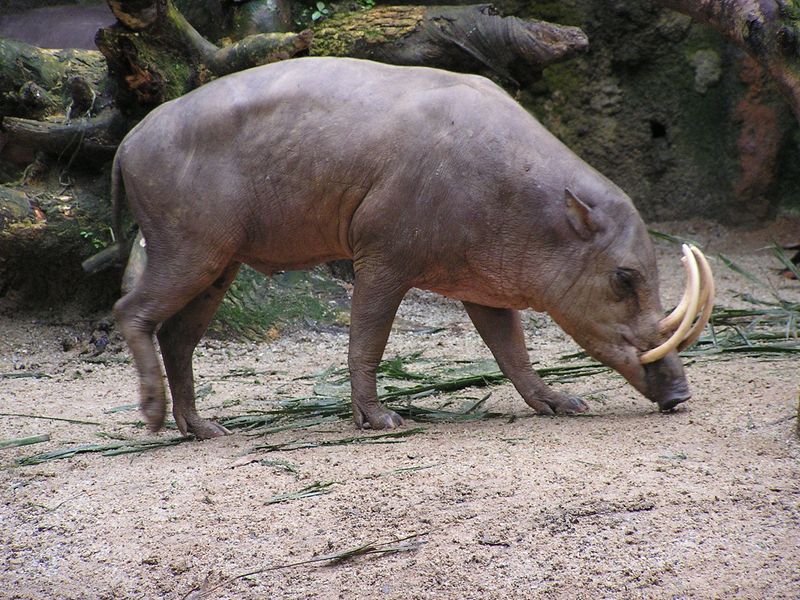
The Babirusa, native to the Indonesian islands, is a unique member of the swine family.
Known for its distinctive tusks that curve backward and can grow long enough to pierce its own skull, the Babirusa’s appearance is both fascinating and slightly intimidating.
This unusual creature thrives in the swamps and rainforests, where it forages for fruits and nuts.
Despite its formidable appearance, the Babirusa is a peaceful animal, using its tusks primarily in male-to-male combat over mates rather than for defense.
15. Irrawaddy Dolphin
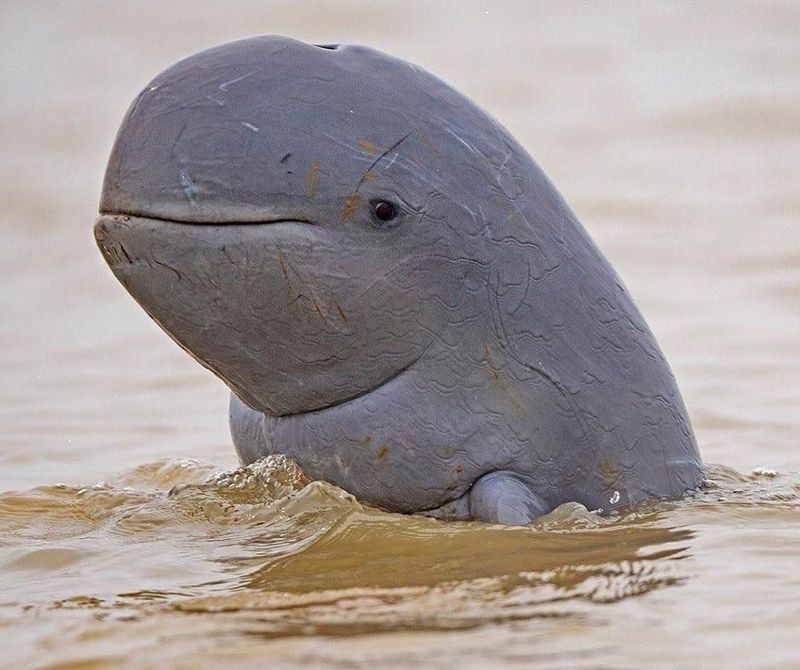
The Irrawaddy Dolphin is a freshwater marvel with a distinctive rounded head and expressive features, found across South and Southeast Asia.
Unlike their oceanic cousins, they thrive in rivers and coastal waters, often forming small pods and displaying playful, social behaviors.
In parts of Myanmar and Cambodia, they even cooperate with local fishermen—herding fish into nets in a rare example of human-animal teamwork.
Sadly, threats like pollution, dam construction, and fishing gear entanglement are putting them at risk.
16. Kakapo
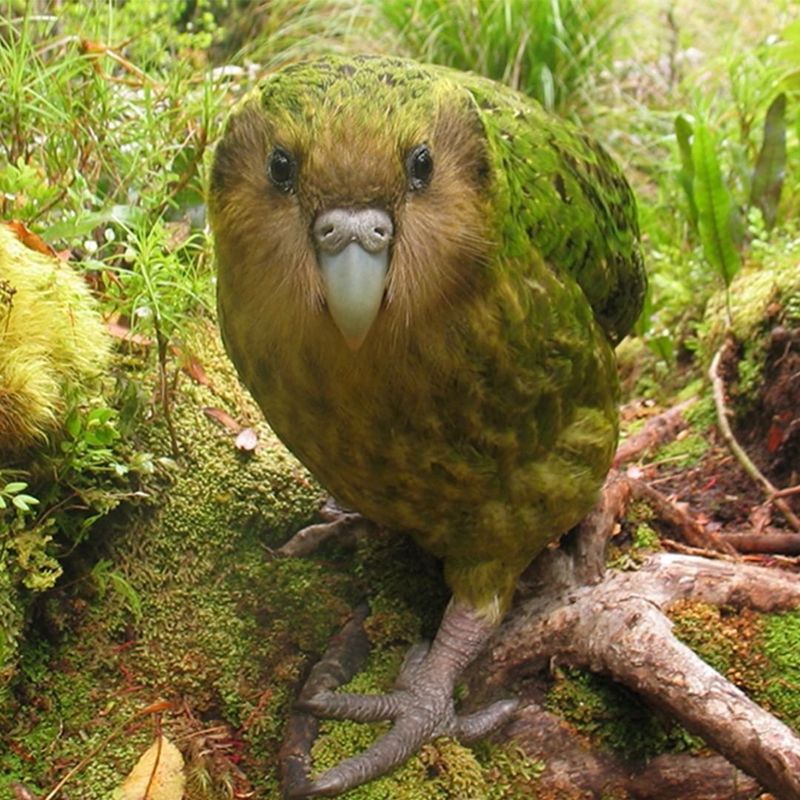
The Kakapo is a flightless, nocturnal parrot from New Zealand, famous for its mossy green feathers and charmingly odd appearance.
Unable to fly, it waddles and climbs through forests at night in search of fruits and plants, living a quiet, ground-dwelling life.
Once nearly extinct, the Kakapo has become a conservation success story, thanks to breeding programs and predator-free sanctuaries.
Its quirky personality and rarity have made it a beloved symbol of wildlife preservation.
Saving the Kakapo means preserving one of the most unique birds nature has ever created.
17. Saiga Antelope
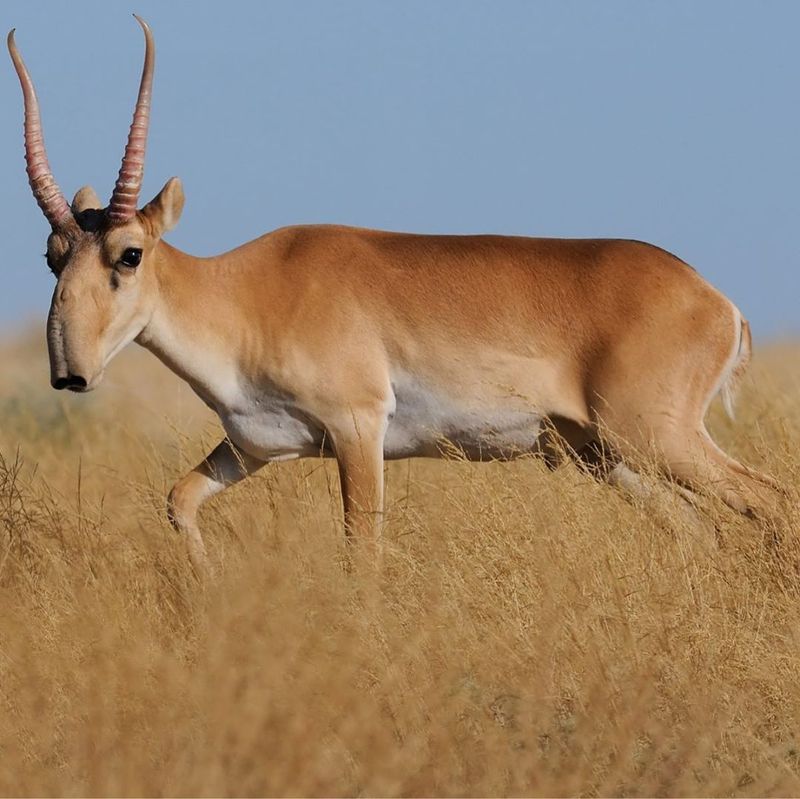
The Saiga Antelope is instantly recognizable thanks to its oversized, bouncy-looking nose that gives it a cartoonish charm.
That odd nose is actually a brilliant survival tool—it filters dust in the summer and warms freezing air in the winter.
Native to the steppes of Central Asia, Saigas are built to handle extreme climates with ease.
Sadly, their numbers have dropped due to poaching, disease, and habitat loss, putting this quirky creature at serious risk.
Watching a herd gallop across the plains, noses bobbing in unison, is a surreal and unforgettable sight worth protecting.

